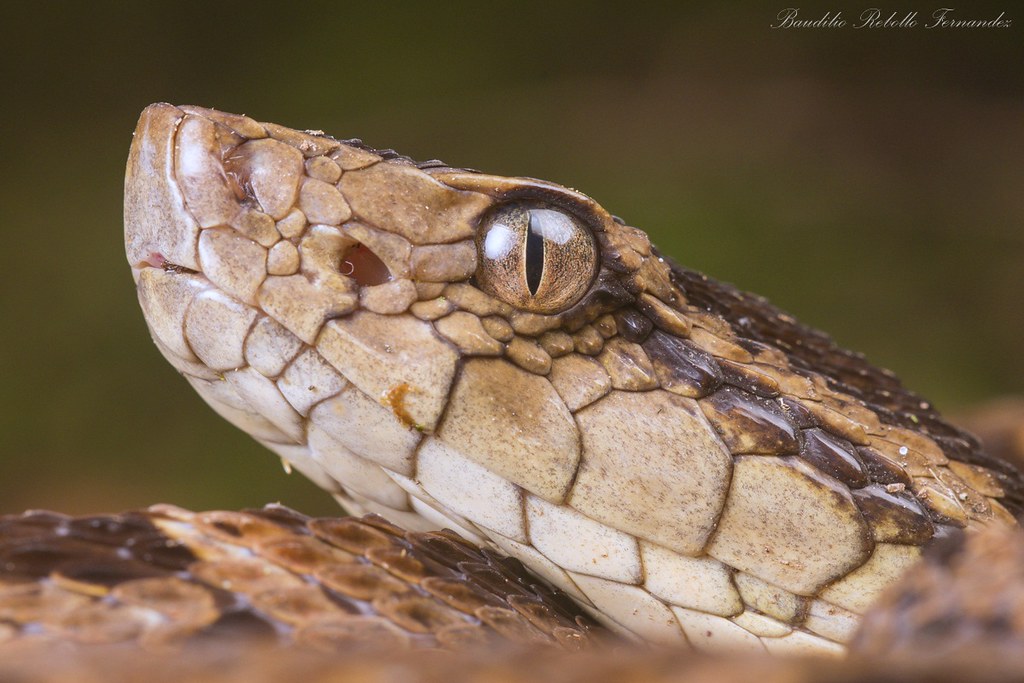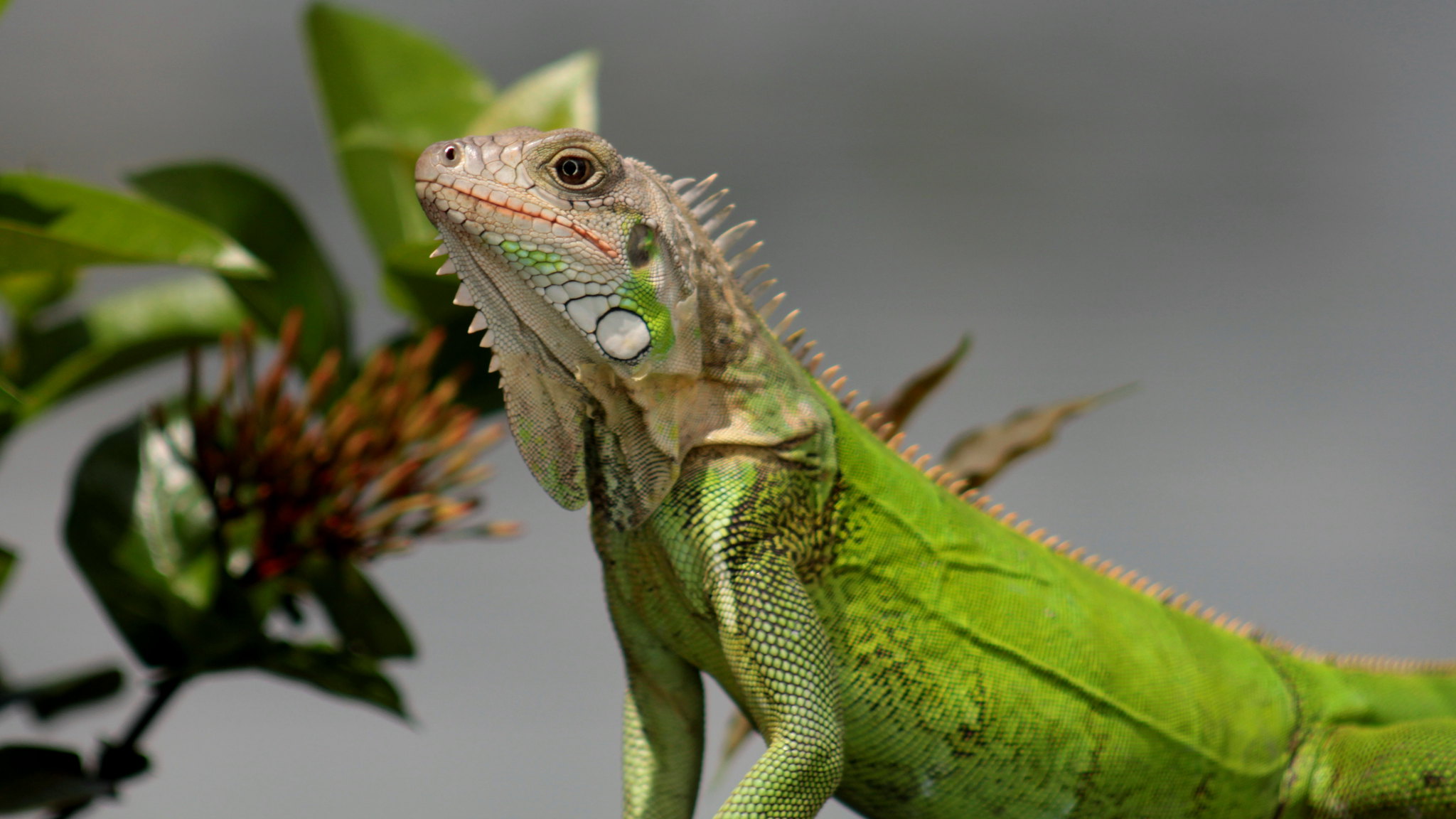
| Tikal Scientific Information Center |
Tikal's Meteorological Information | Tikal's Hydrology | Tikal's Ecology | Tikal's Flora | Tikal's Fauna |
| Tikal's Mammals | Tikal's Felines | Tikal's Bats | Tikal's Birds | Tikal's Insects | Tikal's Reptiles | Tikal's Amphibians |
Reptiles at the Tikal National Park in Guatemala
Reptiles, unlike amphibians, have scales and their eggs have leathery calcareous shells, similar to those of birds. Turtles are the only reptiles with shells. Crocodilians are large aquatic reptiles with powerful jaws and thecodont teeth. Among lizards the length of their limbs varies. Snakes are limbless squamates.
Although the City of Tikal and its surrounding area were abandoned by the Maya some 1,100 years ago, the original inhabitants of the region still live there today. The natural heritage of the Peten region is amphibian and reptile rich.
No doubt the Maya had as much respect of venomous snakes as the contemporary inhabitants of the region do today... Our jungle explorations adventurers are advised to learn about and look out for coral snakes (Micrurus spp.), jumping pitvipers (Atropoides nummifer), rainforest hognosed vipers (Porthidium nasutum), and most specially the barba amarilla or fer-de-lance (Bothrops asper) and the Cascabel or Neotropical rattlesnake (Crotalus durissus).
Reptiles were probably an important source of protein for the Maya, such as river turtles (Mesoamerican sliders – Trachemys scrita) and Morelet's crocodiles, Boas (Boa constrictor) and green iguanas. Amphibians, generally smaller, were not usually eaten, but played an important role in Mayan mythological symbolism. Frogs represented life-giving rain and the Earth was represented as the back of a huge crocodile.
Lizards are tough to spot and perhaps you may see snakes zigzagging across the path... You may even get a chance to see a crocodile! For more information please read:
Campbell, Jonathan A. Amphibians & Reptiles of Northern Guatemala, the Yucatan & Belize, Animal Natural History Series, University of Oklahoma Press, 1998.
Did you know that...
Lake Peten Itza, 32 kilometers south of the Tikal National Park, is the largest in the Yucatan Peninsula?
The Maya carved magnificent wooden lintels out of the bark of the zapodilla tree (Achras zapota)?
If you are venturing into the jungle it would be a great idea to find out whether your tour operator has any knowledge of snakes and if they carry anti-venom serums in their adventures. These are usually very expensive and only the most serious and professional outfitters are even able to afford them. There are some seriously venmous snakes in the Maya jungle...
The first study on reptiles and amphibians ever conducted in the region was included in the herpetological volumes of Biologia Centrali Americana (A.C.L.G. Günther, 1885-1902)?
The British Museum of Natural History in London and the Musée National d'Histoire Naturelle (Paris) both fielded studies in the region in the late nineteenth century?
The herpetological studies conducted by Brochi (1881-83) and Duméril, M. Boucourt and F. Mocquard (1870-1909) were published in Mission Scientifique au Méxique et dans l'Amérique Centrale?
Fer-de-Lance
Order: Squamata
Suborder: Ophidia (Serpentes)
Family: Viperidae
Species: Bothrops asper
Of all snakes that live in the Peten, this is the most dangerous, but not the most poisonous- which is the coral snake, that has a much more potent venom. The fer-de-lance, a pit viper, has heat-detecting glands in his head, whose openings resemble pits. It is dangerous because of quantity rather than quality of its hemotoxic poison, when a fer-de-lance strikes it can inject a lot of venom, because of its long fangs, which also accounts for the depth at which it is injected into the victim. It is not strange to hear stories about it! It is called barba amarilla in Spanish, because of its conspicuous yellow head, lower jaw and underside. Other common Spanish names are terciopelo or cantil devanador.

Fer de Lance, Bothrops asper
Photo by Budi Rebollo Fernandez
Moreletti Crocodile
Order: Sauria
Family: Crocodilidae
Species: Crocodilus moreletti
Out of the 2 species of crocodiles found in Tikal, Morelet’s crocodiles have a smaller distribution than its relative, the American crocodile (Crocodylus acutus), limited to the Peten region in Guatemala, Belize and from Southern Yucatan to Central Tamaulipas in Mexico. They can be seen in the calm waters of lakes, lagoons, slow moving streams, and aguadas such as those around Tikal. They feed mainly on mollusks and small vertebrates, including fish, amphibians, turtles and small mammals.
Crocodiles had an important place in Maya mythology: a crocodile was believed to carry the world on its back, while swimming across a vast body of water! However, today their populations have decreased dramatically due to hunting and habitat destruction. They are now listed in CITES Appendix I, like the American Crocodile.

Crocodile, Crocodilus moreletii
Green Iguana
Order: Squamata
Suborder: Lacertida
Family: Iguanidae
Species: Iguana iguana
The Green Iguana or American Tropical Lizard, can reach a length of more than six feet, from head to tail. Males may have yellow or orange on their body, and mainly on the head, especially during breeding season. Their head-bobbing is a common behavior that signals other males about territorial boundaries; males use it to attract females as well.
This reptile is strictly herbivorous. Juveniles are an easy prey to avian predators in general. Adults are also hunted by humans for their white meat as well as their purported medicinal qualities. It is relatively harmless, although anything with a mouth usually can bite. Itzam Na, the most powerful God and head of the Maya Pantheon, is always represented as an Iguana, lizard or crocodile manifestation.

Iguana, Iguana iguana
Photo by Julio E. Milán

Dugout canoe in the Naha Lagoon, in Chiapas, Mexico, where our natural discovery expeditions are led by our Lacandon Maya partners

Reptiles: Reptiles are ectotherms (cold-blooded) and use the heat of the sun to warm themselves. They have dry scaly skin and typically lay soft shelled eggs. Members of this class include tortoises, turtles, lizards, snakes and crocodiles.
Amphibians and Reptiles of Northern Guatemala, the Yucatan and Belize by Jonathan A. Campbell is a wonderfully illustrated and detailed field guide to amphibians and reptiles in the region. It includes excellent scientific information as well as stories of personal encounters with the wildlife in the Peten.

We hope you will enjoy www.tikalpark.com and its Spanish version www.parque-tikal.com
For reservations or more information write to us at tikalpark@tikalpark.com

| Home | Arts | Sciences | Transportation | Lodging | Special Tours | Birding Tours | Tours | Map | About Us | e-mail us | Site Map |